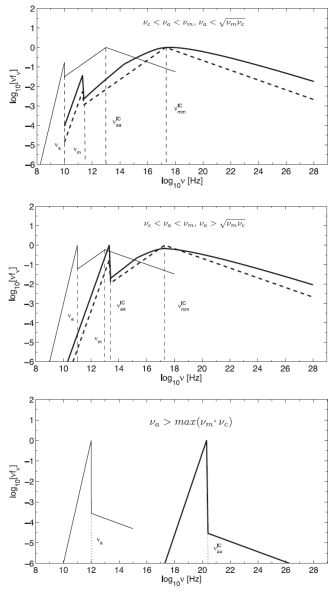Compton scattering of self-absorbed synchrotron emission
2013-11-22Synchrotron self-Compton (SSC) scattering is an important emission mechanism in many astronomical sources, such as gamma-ray bursts (GRBs) and active galactic nuclei (AGN). We give a complete presentation of the analytical approximations for the Compton scattering of synchrotron emission with both weak and strong synchrotron self-absorption. All possible orders of the characteristic synchrotron spectral breaks (synchrotron absorption frequency νa, synchrotron typical frequency νm, and synchrotron cooling frequency νc) are studied.
In the strong absorption regime, i.e. νa > νc, heating of low-energy electrons due to synchrotron absorption leads to pile-up of electrons, and form a thermal component besides the broken power-law component. This leads to two-component (thermal + non-thermal) spectra for both the synchrotron and SSC spectral components. For νc < νa <νm, the spectrum is thermal (non-thermal) dominated if νa > sqrt(νmνc ) (νa < sqrt(νmνc)). Similar to the weak-absorption regime, the SSC spectral component is broader than the simple broken power-law approximation. We derive the critical condition for strong absorption (electron pile-up), and discuss a case of GRB reverse shock emission in a wind medium, which invokesνa > max(νm, νc). More details can be seen in Fig. 2.

The work by He Gao, Wei-Hua Lei, Xue-Feng.Wu, & Bing Zhang has been accepted to be published in the MNRAS in 2013, please see MNRAS, 435, 2520–2531 for more details (http://mnras.oxfordjournals.org/content/435/3/2520).

 Search
Search

